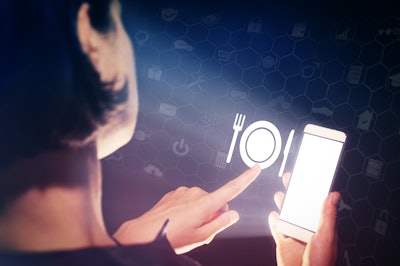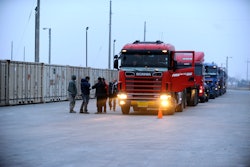
When Ling Wollenschlaeger, CEO of Pittsburgh Fresh, reviewed the cost of partnering with delivery services like UberEats, she discovered the operational cost of using her own drivers was lower than the well-promoted meal food courier service.
Meal delivery options are expanding rapidly, and business owners like Wollenschlaeger and David Greensmith, president of Essential Meal Delivery, a Toronto-based food service company, say they recognize their customers’ ability to pull up a phone or tablet to order their next entrée.
Market research shows that the trend will grow with American consumers. According to NPD, a U.S. market restaurant services research firm, online food orders have grown from 33 percent in 2013 to 53 percent in 2017.
“Almost 8 percent of NPD’s measured universe of $1.8 trillion in U.S. consumer purchasing is now online,” says David Portalatin, the firm’s vice president and industry advisor for their food and beverage division, in a published report on the growth of meal delivery options.
“In both retail food and foodservice, e-commerce penetration is far lower than the average across industries, but the gap is shrinking fast as Americans turn to e-commerce for groceries, restaurant meals and subscription meal kits,” he adds. “The manufacturers, retailers and restaurant operators that best leverage digital will win in today’s challenging environment.”
Meal delivery concepts like UberEats, AmazonRestaurants, GrubHub and DoorDash are sprouting up like dandelions after a spring rain. Throughout the United States, these firms are delivering everything from a Big Mac to a Vietnamese avocado egg roll.
Many restaurants are partnering with delivery services, says Yukon Palmer, a senior executive with FieldLogix, a GPS fleet and workforce management company, also considered an Internet of Things (IoT) provider. He says restaurant owners should consider some critical factors in determining if these delivery services are cost effective, but also to consider other key customer satisfaction factors when they make their choices.
“Uber takes 30 percent of each order,” says Greensmith, “That’s why I made the choice to use an internal team for deliveries.”
Wollenschlaeger makes more than 100 deliveries to her customers every Sunday. “It’s hard to trust someone with so many deliveries with the standards that I want for my customers. If I used Uber, it would kill my bottom line.”
“Without our own drivers, we would have less control on our delivery,” says Mairene Branham, the owner of The Meal Prep company. She adds that her drivers wear uniforms and use vehicles with the corporate logo, which helps with branding efforts to grow her base of customers.
To control their delivery costs, all three owners use the Goose workforce management solution by FieldLogix to help with their multitude of meal deliveries.
Wollenschlaeger and her cooks prepare their meals every Sunday for her Pennsylvania customers. She assigns each driver a zone to make their deliveries. “Each driver knows his or her area, so they’re comfortable with their delivery routine,” she explains. When she adds or drops a customer in one of those zones for a vacation or extended business trip, it’s easier for her drivers to adjust to those changes.
By using a custom delivery system like Goose, drivers for Wollenschlaeger’s firm can text each customer with an expected delivery time.
“Our customers get to know where their driver is on his or her route, and through our notification they can anticipate the delivery,” she says.
Greensmith says his drivers ask for a signature for each delivery. With some of his Toronto customers, they have a concierge who manages the front desk of their high-rise apartments or condo who sign for them. In other cases, the client tells his drivers to leave the meal by the door. When a delivery is made without someone at home, his operators take a picture of the delivery, showing their client the location of the delivery.
The Goose delivery system allows his team to make needed adjustments to the dietary restrictions of his customers, says Greensmith. His deliveries have a custom account for every client who gets meals.
A Consistent Approach
Having their own delivery team also adds a consistent approach for their customers, the three food executives say.
Wollenschlaeger and Branham explain that their delivery system gives them feedback on the delivery, as well as comments on the meals.
The Pittsburgh chef says she makes her weekly deliveries on Sunday, typically a slower day for traffic. However, accidents and construction do occur in her city, and her drivers have the ability to notify their clients when a delivery may take more time to get to them.
Branham makes her deliveries on weekdays, and while her team keeps to an optimum schedule, they also experience delays. Like Wollenschlaeger, they also can notify their customers.
Greensmith uses the delivery system notification in another way. He delivers about 30 percent of his normal orders to senior citizens. When those deliveries are completed, it alerts not only the customer but also their children or relatives who pay for them.
“Those customers get a notice that their mother or father have their meals,” he explains. “If they live in another town, they have the satisfaction that the seniors have easy to prepare meals that meet their dietary needs.”
Meal prep managers should see a growing trend for more customers, especially those patrons who want an alternative to meals high in fat and cholesterol. Yet, it’s the operational research on how to lower costs while providing a good meal with exceptional delivery that can help them compete against restaurants that rely on those well-publicized food delivery services.
“When my customers take the time to review all aspects of having an internal delivery system instead of calling upon partners like Uber and Amazon, they recognize that having their own staff handle this saves them money, but having the same driver also impresses their customers,” Palmer says.

















